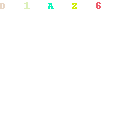By: Frank Buytendijk, chief marketing officer
To question what is real and what is not, Plato tells a story about a cave. In the middle of a cave, a number of prisoners sit against a small wall, chained since childhood. Behind them there is a huge campfire, which they cannot see. In between the campfire and the prisoners, people walk in and out. All the prisoners can see is the shadows of these people on the cave’s wall in front of them. And because of the echo, even the sounds the people make seem to come from the direction of the shadows. The prisoners would know no better than these shadows to be the real world.
Now let’s assume, Plato continues, that one prisoner is released from his chains, gets up and walks around. First he will not recognize anything in this new reality, but after time he would adapt. He would understand more about the new world, and perhaps even understand how people walking alongside a campfire cast shadows on the wall. What would happen if he would return to the other prisoners and tell them about what he has learned. They would ignore him, ridicule him, and if it weren’t for their chains, they would probably kill him.
A story from the ancient past? Certainly, but it still holds true. In fact, this is something to remember every time we sit behind the computer and look at a graph in our business intelligence tools, and study a Visio-style diagram that defines a process. They are not real, they are nothing but reflections. While we stare at the computer, reality is what is happening behind us.
Don't be like the prisoner, mistaking graphs and diagrams for reality. Reality, or the most approximate thing to it, is in conversations between you and your customers. The more you try to model them, style them, and simplify them, the more abstract they become, the more of a shadow of reality they are. Instead, business managers and business analysts should focus on following the conversation with the customers and other stakeholders, and conduct business based on this reality. A business process then becomes not a predefined set of steps, but nothing more than a set of activities that allows you to talk, share and interact. Freely. Really.

Plato’s Cave in an illustration from 1604